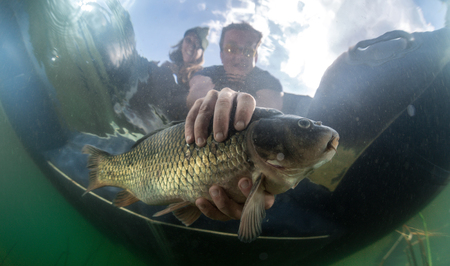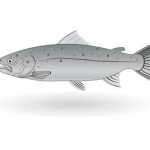Understanding What Makes a Great Fly Reel
If you’re planning a fly fishing trip to iconic U.S. destinations like Montana, Colorado, or Wyoming, having the right gear is essential—especially your fly reel. These regions offer diverse water conditions and fish species, so your reel needs to be up for the challenge. Let’s break down what makes a high-quality fly reel and which features you should look for before heading out on the water.
Key Features to Look For
Drag System
The drag system helps control how much resistance a fish feels when it pulls on your line. In places like Montanas Big Hole River or Colorado’s Gunnison River, where trout are strong and currents can be fast, a smooth and reliable drag system is a must. Most quality reels come with either a disc drag or click-and-pawl system:
| Drag Type | Best For | Pros | Cons |
|---|---|---|---|
| Disc Drag | Bigger fish and faster currents (e.g., Montana rivers) | Smooth, adjustable, strong stopping power | Slightly heavier and more expensive |
| Click-and-Pawl | Smaller streams and traditional anglers (e.g., small Colorado creeks) | Lighter weight, simple design | Less stopping power, limited adjustment |
Reel Weight
You want your reel to balance well with your rod. Too heavy, and casting becomes tiring; too light, and it throws off your accuracy. In the Rockies, where long days on the water are common, picking a reel that matches your rods weight class (usually 4–6 wt for trout) helps reduce fatigue.
Arbor Size
The arbor size affects how quickly you can retrieve line. A larger arbor means faster line pickup—helpful when a big cutthroat suddenly runs downstream in Montana’s Yellowstone River.
| Arbor Size | Line Retrieval Speed | Suitable Conditions |
|---|---|---|
| Large Arbor | Fast | Larger rivers & fighting big fish (Montana) |
| Mid Arbor | Moderate | Diverse situations (Colorado streams & lakes) |
| Standard Arbor | Slower | Lighter setups & traditional fishing styles |
Build Material
The durability of your reel matters—especially in rugged terrain like Colorado’s high-altitude lakes or Montana’s backcountry waters. Look for reels made from machined aluminum for strength without excess weight. Cast aluminum or composite materials can be more affordable but may not last as long if dropped on rocky riverbanks.
Tailoring Your Reel Choice to Your Destination
No two fly fishing spots are exactly alike. That’s why choosing a reel based on where youre headed makes sense:
- Montana: Go for strong drag systems and large arbors to handle bigger trout in wide rivers.
- Colorado: Mid-arbor reels with lightweight construction work well in alpine streams and reservoirs.
- Northern California & Pacific Northwest: Consider corrosion-resistant materials if fishing brackish or coastal waters.
A great fly reel isn’t just about looks or brand—it’s about function, feel, and how well it performs in the environments youre fishing. Understanding these core features will help you pick the best reel for legendary U.S. fly fishing hotspots like Montana and Colorado.
2. Best Fly Reels for Big Trout in Montana
Montana is a dream destination for fly anglers, especially those chasing trophy-sized trout in iconic rivers like the Madison, Yellowstone, and Bighorn. These rivers are known for their strong currents and hard-fighting fish, which means your gear needs to be up for the challenge. When targeting big browns or rainbows in Montana, a reliable fly reel with a smooth drag system and solid build quality is essential.
What to Look for in a Fly Reel for Montana Waters
Whether youre casting from the bank or wading deep into a cold mountain stream, here are some key features to look for in a fly reel:
- Smooth Drag System: Big trout will test your gear, so you need a drag that engages smoothly without jerking.
- Durability: Cold temperatures, rocky riverbeds, and long days on the water demand a reel built to last.
- Large Arbor Design: Helps pick up line quickly when a fish runs downstream.
- Corrosion Resistance: Especially important if you occasionally fish saltwater or humid environments.
Top Fly Reels for Big Trout in Montana
Here are some of the best fly reels that perform exceptionally well in Montana’s demanding conditions:
| Reel Model | Key Features | Best For |
|---|---|---|
| Ross Evolution LTX | Lightweight, ultra-smooth drag, made in Colorado | Precision casting and smooth control on spring creeks |
| Nautilus X-Series | Larger arbor, sealed drag system, durable aluminum construction | Handling aggressive trout in fast-moving water |
| LAMSON Guru S | Milled design for durability, smooth conical drag system | All-around performance with minimal maintenance |
| Sage Spectrum LT | Sealed carbon drag, lightweight frame, large arbor | Versatile use across multiple Montana rivers |
| Hatch Iconic 4 Plus | CNC-machined body, powerful multi-disc drag system | Trophy trout on the Yellowstone River or similar big water |
Why Drag Matters More Than You Think
If youve ever hooked into a chunky brown trout on the Madison during runoff season, you know how critical drag performance can be. A sticky or inconsistent drag might cost you the fish of a lifetime. That’s why investing in a high-quality reel with a reliable sealed drag system is one of the smartest moves an angler can make when fishing Montanas top trout waters.
Tried-and-True Tip:
“Always test your drag before stepping into the river—especially when targeting large trout. A five-minute check can save you from heartbreak later.”
A Local Favorite: Ross Reels from Colorado
Though not made in Montana, Ross Reels (based in Montrose, Colorado) have earned a loyal following among Western anglers. Their Evolution series is often spotted on guide rods along the Missouri and Gallatin Rivers thanks to its reliability and smooth performance under pressure.
Selecting the right reel can make all the difference when youre battling big trout in wild rivers. Choose wisely—and youll be ready when that monster rainbow makes its run downstream.

3. Top Reels for High-Altitude Fly Fishing in Colorado
Colorado’s alpine rivers and streams—like the Gunnison, South Platte, and Arkansas—offer some of the most scenic and challenging fly fishing in the U.S. But fishing at high altitudes requires gear that’s up to the task. The thinner air, fast currents, and long hikes to remote waters demand fly reels that are both lightweight and built for precision. Here’s a look at some of the top-performing fly reels designed to handle Colorado’s rugged terrain.
What to Look for in a High-Altitude Reel
When picking a reel for mountain fly fishing, weight and drag system are key. You’ll often be hiking into remote areas, so every ounce counts. A sealed drag system is also essential—it keeps out dust and grit from those rocky trails and turbulent waters.
Key Features to Consider:
- Lightweight Construction: Aluminum or carbon fiber frames help reduce fatigue during long hikes.
- Sealed Drag Systems: Keeps performance consistent even when wet or dirty.
- Smooth Retrieve: Helpful when fighting trout in fast-moving water.
- Large Arbor Design: Quicker line pickup, which is crucial when fish make fast runs downstream.
Top Fly Reels for Colorado Waters
| Reel | Best For | Weight | Drag System | Price Range |
|---|---|---|---|---|
| Ross Evolution LTX | All-around performance in alpine rivers | ~4.2 oz (size 4/5) | Sealed carbon drag | $395-$425 |
| LAMSON Litespeed F | Ultra-lightweight backcountry trips | ~3.6 oz (size 5+) | Sealed conical drag | $400-$450 |
| Sage Enforcer | Bigger fish in faster water (e.g., Gunnison) | ~6.1 oz (size 6/7) | Carbon sealed disc drag | $575-$625 |
| Redington Rise III | Budget-friendly with solid features | ~5.0 oz (size 5/6) | CNC-machined drag system (not fully sealed) | $200-$220 |
User Tip: Match Your Reel to the River
If you’re heading to the high-altitude lakes near Leadville or exploring small creeks in Rocky Mountain National Park, go ultra-light with a size 4/5 reel. For bigger rivers like the Arkansas or Fryingpan, step up to a 6-weight setup for better control against strong currents and larger trout.
Pro Insight:
“A lightweight reel with a reliable drag can make or break your day in the Rockies,” says Mike T., a local Colorado guide. “You don’t want extra bulk when youre hiking above 9,000 feet.”
No matter where you cast your line—from the tailwaters of Cheesman Canyon to remote stretches of the Rio Grande—having the right reel helps you focus more on landing fish and less on fighting your gear.
4. Fly Reels Built for Versatility Across US Hotspots
When youre fly fishing across different regions of the U.S.—from the icy streams of Montana to the warm, bass-filled lakes of the Southeast—you need a reel that can handle it all. Versatile fly reels are designed to perform in various conditions, making them a smart choice for anglers who travel or like to explore different fishing environments.
Why Versatility Matters
Different fly fishing hotspots come with their own unique challenges. In Montana and Colorado, you might be targeting trout in cold, fast-moving waters. Head south to Florida or Georgia, and youll be casting for redfish or largemouth bass in warmer temperatures and saltier conditions. A versatile reel ensures that you don’t have to switch gear every time you change location.
Key Features of a Versatile Fly Reel
- Adjustable Drag System: Essential for handling everything from delicate trout to hard-fighting redfish.
- Corrosion-Resistant Materials: Look for anodized aluminum or sealed drag systems if you plan to fish in saltwater.
- Large Arbor Design: Helps with quick line retrieval and reduces line memory, ideal for both freshwater and saltwater species.
- Interchangeable Spools: Allows you to quickly switch between floating, sinking, or intermediate lines depending on your target species and water conditions.
Top Picks for All-Around Fly Reels
| Reel Model | Best For | Price Range | Notable Features |
|---|---|---|---|
| Orvis Hydros | Fresh & Saltwater Species | $250–$300 | Fully sealed drag system, lightweight design |
| LAMSON Guru S Series | Cold & Warm Water Environments | $250–$280 | Anodized finish, large arbor, durable construction |
| Sage Spectrum C | All-around Performance | $150–$200 | Molded carbon drag knob, easy spool change |
| Redington Behemoth | Bigger Game Fish (Bass, Pike) | $120–$150 | Powerful carbon drag system, heavy-duty frame |
Tips for Choosing a Multi-Region Reel
- Know Your Target Species: Trout reels may not hold up against larger saltwater fish—pick one that fits both needs.
- Check Line Capacity: Make sure your reel can hold enough backing for long runs in open water.
- Think About Weight: A lighter reel helps reduce fatigue during long days on the river or flats.
- Maintenance Counts: Even the best reels need care. Rinse after saltwater use and check the drag system regularly.
A good versatile fly reel is like a trusty sidekick—it goes where you go and handles whatever the water throws at you. Whether youre drifting through Rocky Mountain streams or casting into Gulf Coast flats, having a reel that adapts means more time fishing and less time fussing with gear.
5. American-Made vs. International Fly Reels: What to Choose
When youre fly fishing in places like Montana, Colorado, or other top US destinations, choosing the right fly reel can make all the difference. One of the key decisions anglers often face is whether to go with an American-made reel or one from an international brand. Both have their strengths, and your choice may come down to what matters most to you—quality, price, or customer support.
Quality and Craftsmanship
American-made reels are often praised for their high-quality materials and precision machining. Brands like Hatch, Abel, and Ross Reels are known for producing durable and reliable products that can handle rugged conditions found in rivers like the Madison or the Gunnison.
On the flip side, international brands like Hardy (UK), Shimano (Japan), or Lamson (though technically U.S.-based but with global manufacturing) offer advanced technology and innovative designs. These reels are also built to last and perform well in a variety of fishing environments.
Quality Comparison Table
| Brand Origin | Notable Brands | Craftsmanship | Durability |
|---|---|---|---|
| American-Made | Abel, Ross, Hatch | Precision-machined, hand-assembled | High – suited for rugged terrain |
| International | Hardy, Shimano, Sage* | Tech-forward designs, lightweight materials | Medium to High – varies by model |
Pricing Differences
If youre watching your budget while gearing up for a trip to Yellowstone River or the San Juan, price might play a big role in your decision. American-made reels tend to be on the pricier side due to local labor costs and premium materials. International brands sometimes offer more affordable options without sacrificing too much in terms of performance.
Price Range Overview
| Brand Origin | Entry-Level Price | Premium Models |
|---|---|---|
| American-Made | $300–$400 | $600+ |
| International | $150–$300 | $500–$700+ |
Customer Support & Availability
If you fish regularly in the U.S., especially in remote areas like Glacier National Park or Rocky Mountain streams, fast and reliable customer service can be essential. American companies usually provide quicker turnaround times for repairs and easier communication channels for support.
Support Comparison Table
| Brand Origin | Warranty Coverage | Customer Service Speed (U.S.) |
|---|---|---|
| American-Made | Lifelong warranties common | Fast – typically within a week |
| International | Varies by brand – often limited warranties | Moderate – may take several weeks due to shipping delays |
The Bottom Line for U.S. Anglers
If youre fishing frequently in popular U.S. hotspots like Montanas Gallatin River or Colorados Fryingpan River, investing in an American-made reel offers solid durability and excellent support. However, if youre looking for a good value or specialized features at a lower cost, international reels are worth checking out as well.
*Note: Some brands like Sage design their products in the U.S. but manufacture parts overseas.
6. Maintenance Tips for Fly Reels in Harsh Fishing Conditions
Fishing in places like Montana and Colorado means dealing with fast-moving rivers, gritty mountain runoff, and freezing temps—conditions that can really put your fly reel to the test. Keeping your gear in top shape isn’t just about performance, it’s about making sure your reel lasts season after season. Here are some down-to-earth tips to help you care for your fly reel when youre fishing the rugged waters of Americas top fly fishing states.
Keep It Clean After Every Trip
Dust, sand, and silt are everywhere in the Rockies. After each day on the water, rinse your reel with fresh water (especially if you’ve been wading through muddy or sandy runs). Use a soft cloth or brush to wipe away grime—just don’t use high-pressure water, which can push grit deeper into the reel’s internal parts.
Dry Before You Store
If youre fishing in colder climates, make sure your reel is completely dry before storing it. Moisture can freeze inside the drag system overnight, leading to damage or failure on your next cast. Remove the spool and let all parts air dry before putting it away.
Lube Up When Needed
Your drag system needs to stay smooth even when temperatures drop. A light application of reel-safe lubricant on moving parts will keep things running smoothly. Be sure to only use lubricants recommended by your reels manufacturer.
Recommended Lubrication Schedule
| Fishing Frequency | Lubrication Frequency |
|---|---|
| Every weekend | Once a month |
| A few times a month | Every 2-3 months |
| Occasional trips | Twice per season |
Tighten Screws and Check Seals
Bumpy trails and constant casting can shake things loose over time. Every few outings, take a minute to check for loose screws and make sure any rubber seals or O-rings are still intact—these small components protect your drag system from water and debris.
Avoid Overexposure to Extreme Cold
If youre fishing in winter conditions, try not to leave your reel sitting out in sub-zero temps for long periods. Extended exposure can cause materials like carbon fiber or plastic components to become brittle. Keep your gear inside a vest or pack when not in use.
Pro Tip:
If you’re switching between warm indoor environments and icy riverbanks, condensation can build up inside your reel. Open the spool at the end of the day and allow everything to breathe before packing up.


